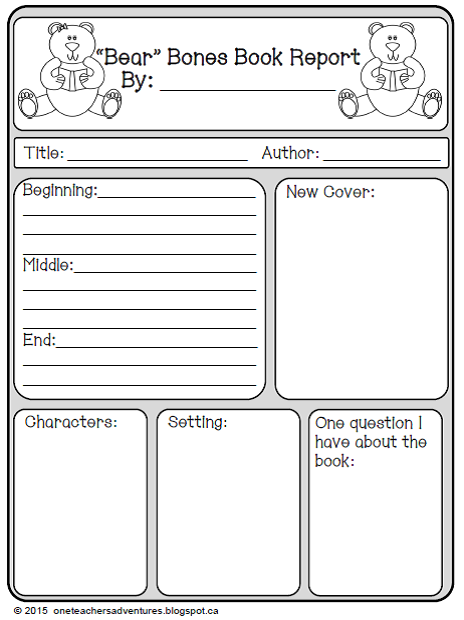When I was in University, my reading professor gave us the idea of a one-page basic book report for young readers. She called it the Bare Bones Book Report. Basically, she folded a piece of paper into quarters and had us fill in each quarter with a different aspect of the book (character, plot, setting, and conflict). She only wanted the bare bones of the book.
I've used versions of this idea for so many assignments, with elementary, middle, and high school students. Last year, I used it as a note-taking strategy in Grade 8 Social Studies. As my students watched a film about the crisis in the Middle East, they took notes in the four section of the paper with these headings: Important People, Important Places, Vocabulary to Know, Questions I Have.
With a Grade 4/5 class, I used it when I was teaching connections in reading. My students made notes about the connections they made in their free choice books. The four headings were: Text-to-Text Connections, Text-to-World Connections, Text-to-Media Connections, and Text-to-Self Connections.
With a Grade 9 English class, I had the students use this in our poetry unit. When we discussed a new poem, students completed a note page, with the four section headings: Examples of Figurative Language, Rhyme Scheme and Rhythm, Imagery, My Understandings.
In a high school French course, I used this format for teaching verb tense. When the students learned a new verb, they conjugated it in four verb tense: Present, Passe Compose, Futur Simple, and Futur Proche.
This is a simple, easy, and no-prep lesson that can be adapted to any grade level and subject area. If you have any ideas on how to use this format, please let me know in the comments.
I have modified the 4-Section Book report from my professor's original idea to create my own "Bear Bones Book Report" for primary readers. This FREEBIE can be found in my TpT store.
I've used versions of this idea for so many assignments, with elementary, middle, and high school students. Last year, I used it as a note-taking strategy in Grade 8 Social Studies. As my students watched a film about the crisis in the Middle East, they took notes in the four section of the paper with these headings: Important People, Important Places, Vocabulary to Know, Questions I Have.
With a Grade 4/5 class, I used it when I was teaching connections in reading. My students made notes about the connections they made in their free choice books. The four headings were: Text-to-Text Connections, Text-to-World Connections, Text-to-Media Connections, and Text-to-Self Connections.
With a Grade 9 English class, I had the students use this in our poetry unit. When we discussed a new poem, students completed a note page, with the four section headings: Examples of Figurative Language, Rhyme Scheme and Rhythm, Imagery, My Understandings.
In a high school French course, I used this format for teaching verb tense. When the students learned a new verb, they conjugated it in four verb tense: Present, Passe Compose, Futur Simple, and Futur Proche.
This is a simple, easy, and no-prep lesson that can be adapted to any grade level and subject area. If you have any ideas on how to use this format, please let me know in the comments.
I have modified the 4-Section Book report from my professor's original idea to create my own "Bear Bones Book Report" for primary readers. This FREEBIE can be found in my TpT store.
To download your own FREE copy of this book review page, click on the picture, or click here.






Comments
Post a Comment